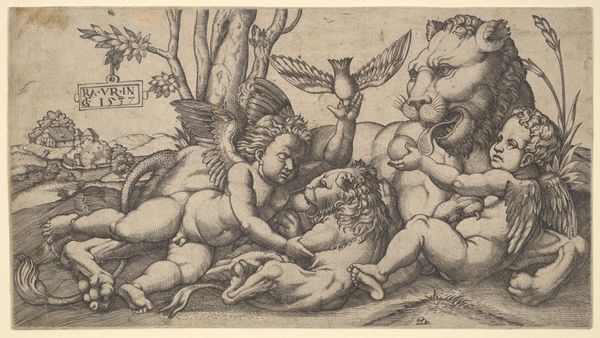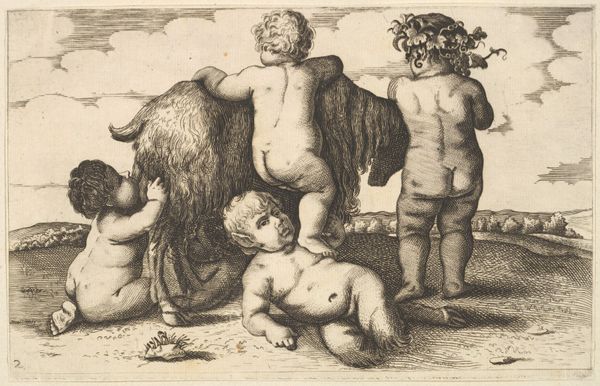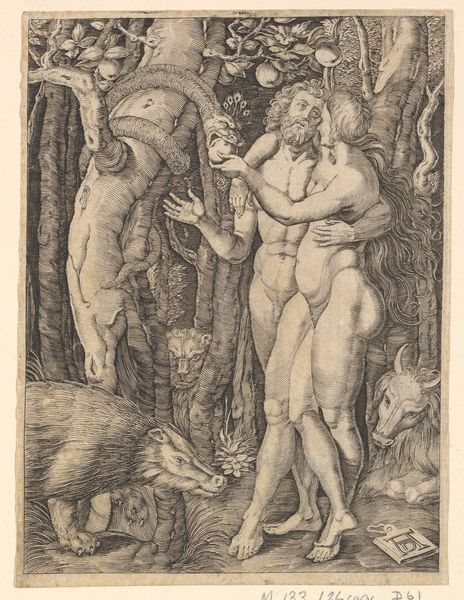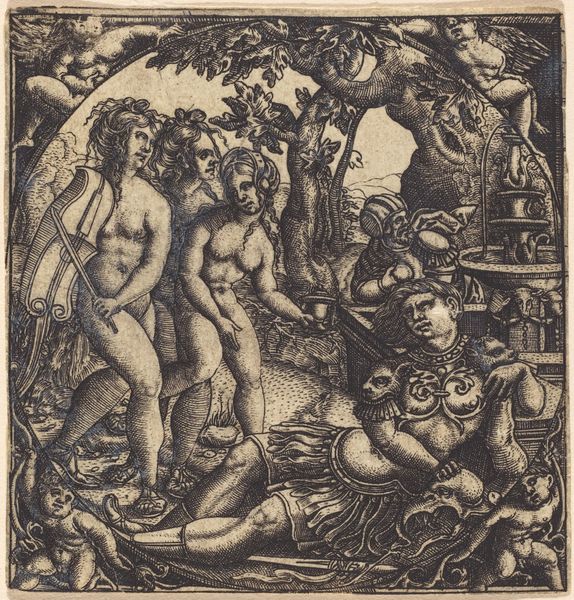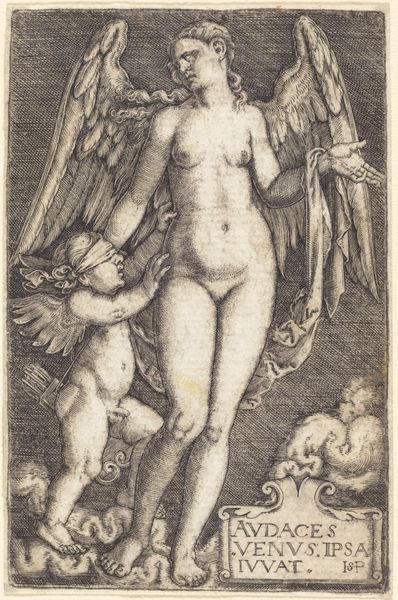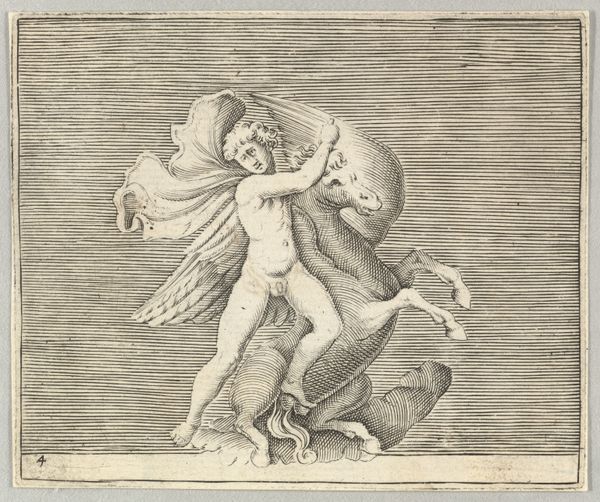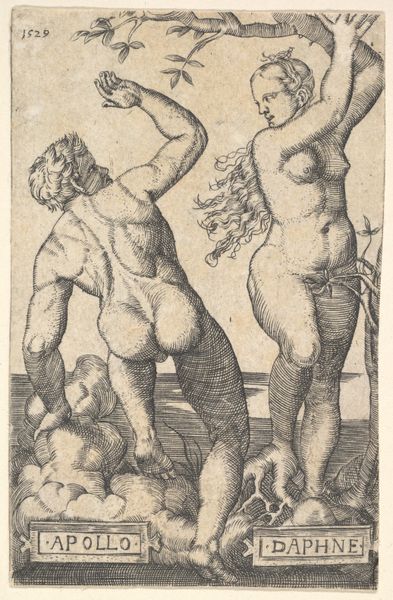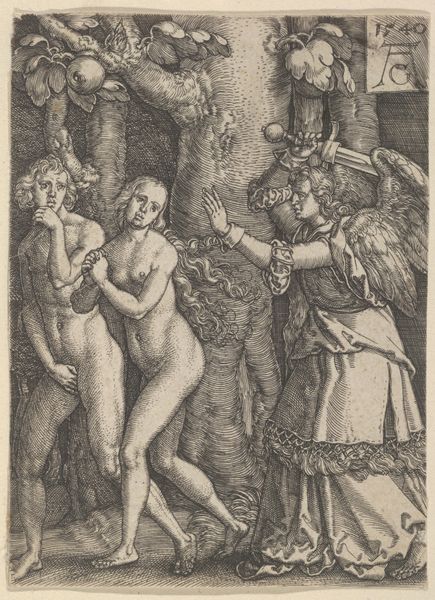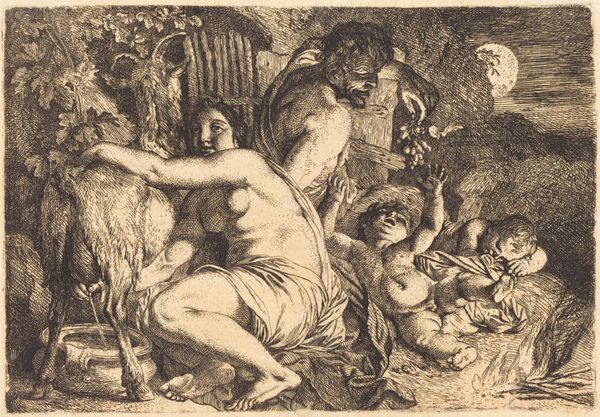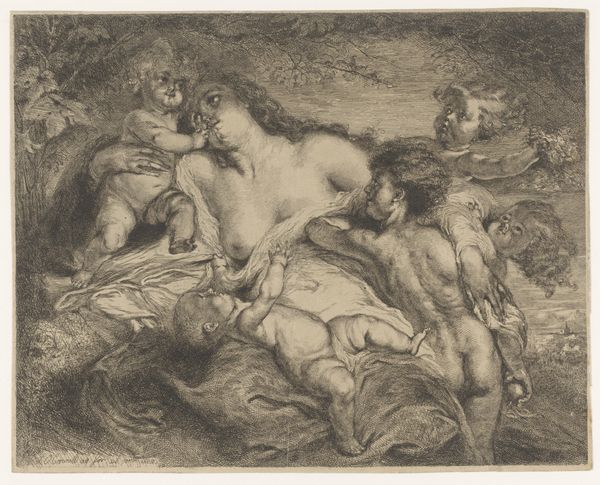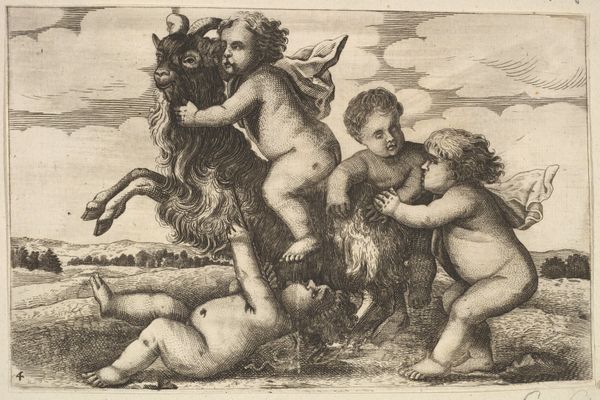
Cupid carrying a fowl accompanied by a dog, and another cupid playing a trumpet c. 1450
0:00
0:00
print, engraving
#
allegory
# print
#
figuration
#
genre-painting
#
italian-renaissance
#
engraving
Dimensions: sheet: 3.4 x 4.5 cm (1 5/16 x 1 3/4 in.)
Copyright: National Gallery of Art: CC0 1.0
Editor: This engraving from around 1450 by Maso Finiguerra depicts two cupids, one carrying a bird and accompanied by a dog, the other playing a trumpet. The figures have this playful, almost chaotic energy. What strikes me, though, is the implied story here... How might we interpret this work through a contemporary lens? Curator: Precisely! Let’s unpack this. We see these cherubic figures enacting scenes that seem joyful on the surface, but I challenge you to look beneath that veneer. Consider the symbolism of Cupid, often linked to desire and impulse, against the backdrop of 15th-century social norms. The bird, the dog, they all carry layered meanings embedded within the power structures of that era. Who gets to experience freedom and pleasure? Editor: So you're suggesting these images aren't simply innocent representations, but potential commentaries on societal restraints and maybe class and gender? Curator: Exactly. Think about the function of allegory in Renaissance art; these weren't always straightforward celebrations, but subtle critiques, masked by familiar stories and symbols. Consider the perspective of marginalized groups at the time, how these symbols could also represent forms of oppression. Editor: That's really fascinating. It's so easy to get caught up in the beauty of the figures and not question the deeper meanings behind their actions. Curator: Absolutely! Engaging with art history isn’t just about aesthetic appreciation, it’s about acknowledging how these historical narratives intersect with contemporary issues of social justice and equity. By recognizing the hidden complexities and thinking about how these images were perceived, and by whom, we see the beginnings of our own modern issues. Editor: This makes me appreciate the piece so much more. I realize now it's like a visual text, inviting interpretations of gender, freedom and much more. Curator: Right. That's the power of art. It reflects its time, yes, but it also sparks conversation, challenges norms, and encourages us to think critically about our own place in society.
Comments
No comments
Be the first to comment and join the conversation on the ultimate creative platform.
